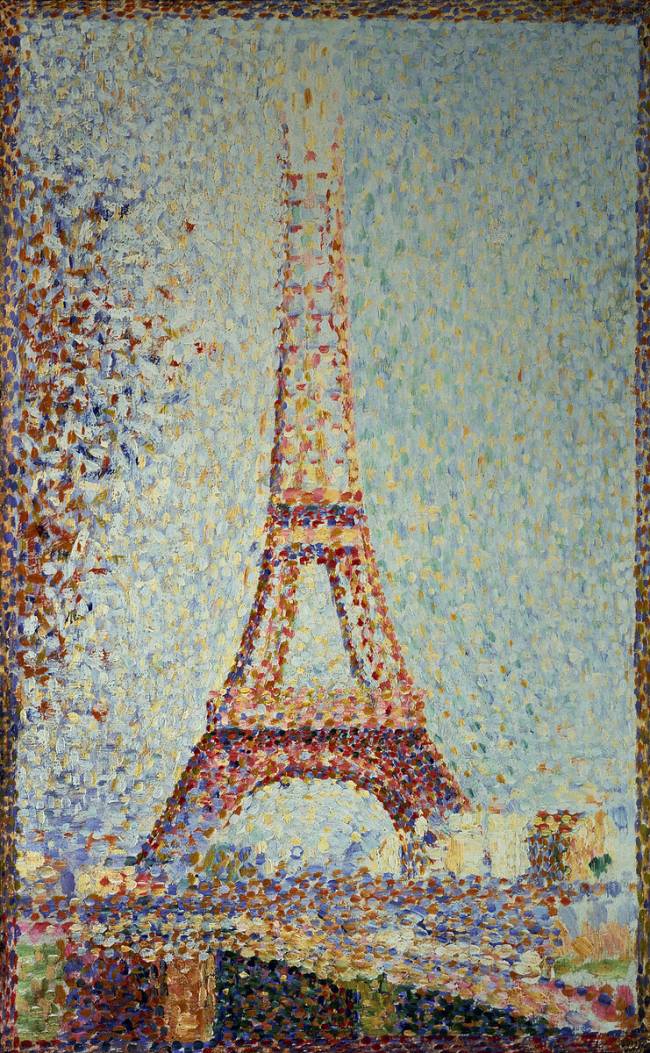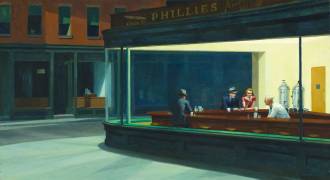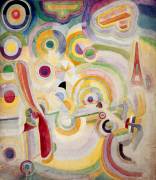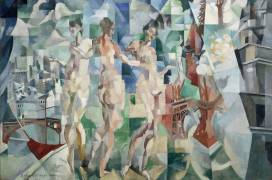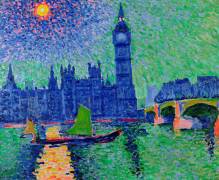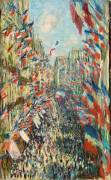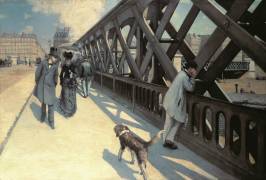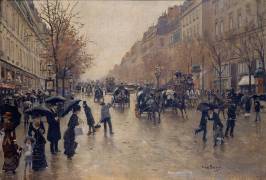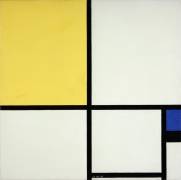Shop art print and framed art La Tour Eiffel by Georges Seurat
Customise
Your art print
La Tour Eiffel OF Georges Seurat
La Tour Eiffel
Georges Seurat's La Tour Eiffel: an emblematic work of pointillism
The Tableau La Tour Eiffel by Georges Seurat is one of the most famous and emblematic works of the artistic movement of pointillism. This masterpiece was created in 1889 by the French painter, who captured the very essence of the tower, the symbol of Paris and France. In this article, we take a look at the history and characteristics of this major work of fine art.
A painting at the heart of the 1889 Universal Exhibition
Georges Seurat completed his painting The Eiffel Tower in 1889, the year of the Universal Exhibition in Paris. The purpose of this exhibition was to celebrate the centenary of the French Revolution and to showcase the industrial and technological advances of the time. The Eiffel Tower, built for the occasion by Gustave Eiffel, was one of the main attractions of the event and symbolised progress and modernity.
.Thus, this painting by Seurat represents not only an emblematic monument of the French capital, but also a historical testimony to a key moment in the history of France and modern art.
The characteristics of pointillism in Georges Seurat's La Tour Eiffel
Georges Seurat is considered one of the founders of pointillism, an artistic movement that followed on from Impressionism and is characterised by the use of small touches of paint juxtaposed to create an overall impression. The painting The Eiffel Tower is a perfect example of this innovative technique:
The precision of the dots
In this painting, Georges Seurat used tiny dots of colour to represent the various elements of the scene: the Eiffel Tower itself, the sky, the clouds, the trees and the figures. This precision gives the work great visual richness and allows the viewer to fully appreciate the complexity of the composition.
Chromatic harmony
Pointillism is based on the idea that the human eye can blend colours when they are placed side by side, creating visual harmony. In the painting The Eiffel Tower, Georges Seurat used a wide range of colours, including warm tones (reds, oranges, yellows) and cool tones (blues, greens), to bring his composition to life. As a result, the whole is very harmonious and pleasing to the eye.
Luminosity and depth
Thanks to his mastery of pointillism, Georges Seurat was able to play with light and depth to give his painting a striking three-dimensional aspect. The sunlit areas of the Eiffel Tower contrast with the shaded parts, reinforcing the impression of volume and realism.
Georges Seurat's painting The Eiffel Tower: a must-see work in the museum
Today, Georges Seurat's painting La Tour Eiffel is considered to be one of the must-see masterpieces on a visit to the musée des beaux-arts. This fascinating work not only allows you to discover the artistic world of pointillism, but also to plunge into the history of Paris and France at the end of the 19th century.
- The place of the Eiffel Tower in art: The Parisian monument has inspired many artists since it was built in 1889. Georges Seurat's painting is just one example of the influence the Eiffel Tower has had on French art and culture.
- The comparative study of other paintings: To gain a better understanding of Seurat's work and the pointillism movement, it may be interesting to compare this painting with other works in the same genre by contemporary painters such as Paul Signac or Vincent van Gogh.
- The historical context: Finally, to understand the full significance of this painting, it is essential to look back at the historical context of the time, marked by the Industrial Revolution, the Universal Exhibition of 1889 and the social and cultural upheavals that ensued.
This artwork is a painting from the modern period. It belongs to the pointillism style.


